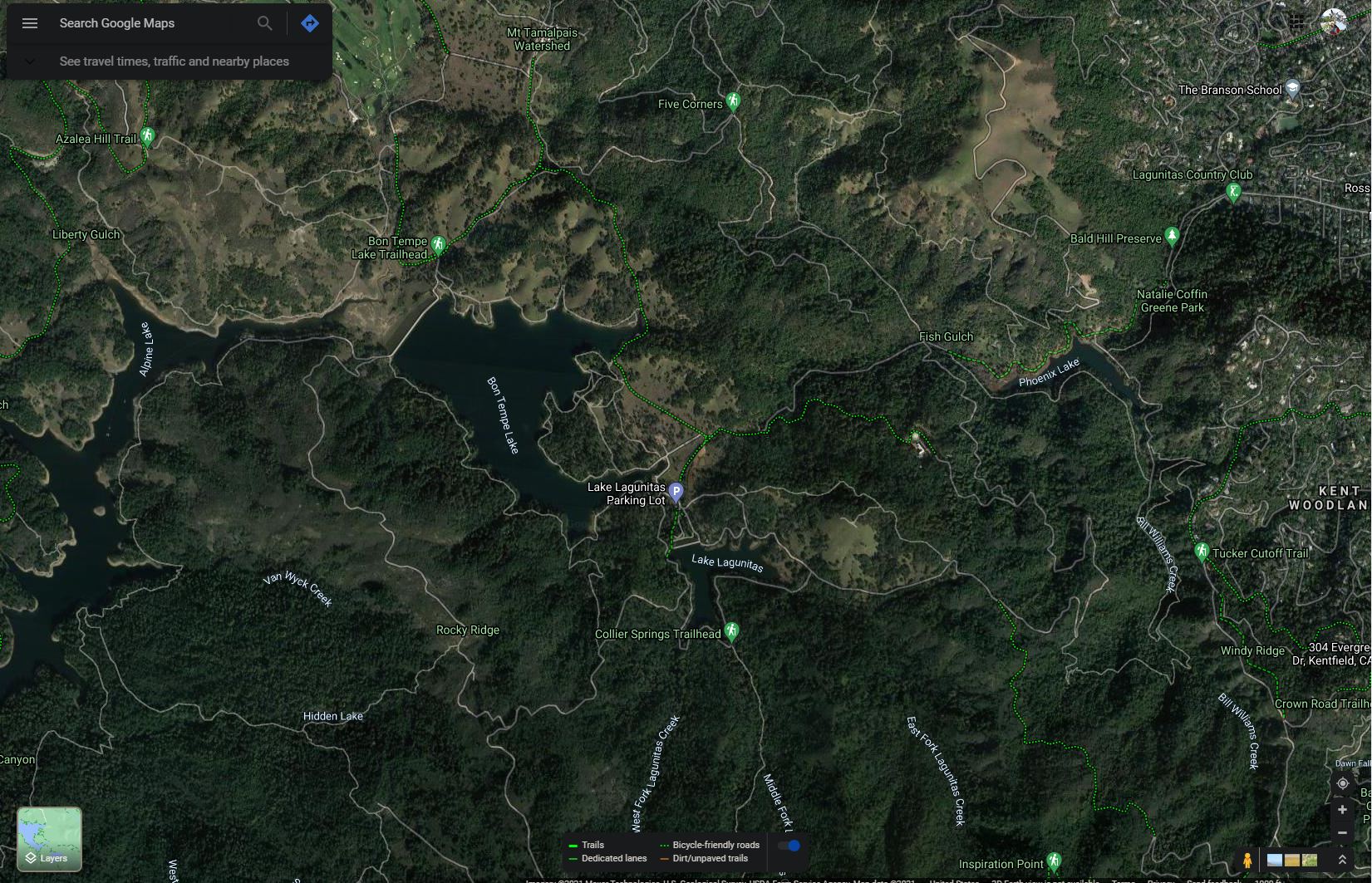|
Turn right and cross the dam. At the far end, there is an area of cattails.
Many indigenous people used the starchy roots of cattails for food. The
fluffy absorbent seeds were used for babies’ bedding. The fire road turns
left, under black oaks and Douglas firs.
One mushroom you are likely to see is the Douglas fir suillus. it has a
mycorhyzal relationship with Douglas firs, meaning that the mushrooms and
trees benefit each other. Unlike the Agaricus mushrooms you buy in the store
that have gills, these mushrooms, which are in the same family as porcini,
have pores. That means the underside of the mushroom looks like a sponge, in
this case a mustard colored sponge. Scratch the side of the stem and wait a
minute and it will turn blue-green!
Cross the bridge over Lagunitas Creek and as you approach some redwoods look
for an acorn woodpecker granary. Acorn woodpeckers usually store their
acorns in trees with soft wood, like pines and Douglas firs. It is less
common to see them in redwoods. It’s likely you will see an acorn
woodpecker, and you are sure to hear them. Some describe the call as manical
laughter and others think they say, “Wake-up, Wake-up!” Xeno-canto.org is
an excellent website for listening to bird songs and calls.
At the junction of Lagunitas Road (some maps call it Lagunitas Lake Fire
Road) and Lakeview Road, turn left to continue around the lake. A newt
crossing sign there by Manor School fourth graders in Laura Honda’s class
reads, “Please watch out for the newts. Their survival depends on us.” Honda
is a Marin treasure, well known for her environmental education work. She
has won many awards, including California science teacher of the year and
the Terwilliger Environmental Award for her work in teaching children to be
good environmental stewards.
Just before the fire road returns to the dam there are some steps and a sign
saying to walk bikes. This is one place a stroller would have to be carried.
When you return to the parking lot take time to look at the bulletin board
that lists visitor sightings of bobcats, otters and other animals, and to
admire the picnic shelter built by the Civilian Conservation Corps during
the Depression.
To get to Sky Oaks from Highway 101, take Sir Francis Drake Boulevard to
Fairfax. Turn left on Pacheco Avenue and make an immediate right on
Broadway. Turn left on Bolinas Road. Go approximately 1½ miles to 700
Bolinas Road where you will see a wooden sign on your left saying “Lake
Lagunitas.” Turn left at the sign onto Sky Oaks Road. Pay parking fee at pay
station. Park at the end of the paved road.
Wendy Dreskin has led the College of Marin
nature/hiking class Meandering in Marin since 1998, and teaches other nature
classes for adults and children. To contact her, go to wendydreskin.com.
source
 |
